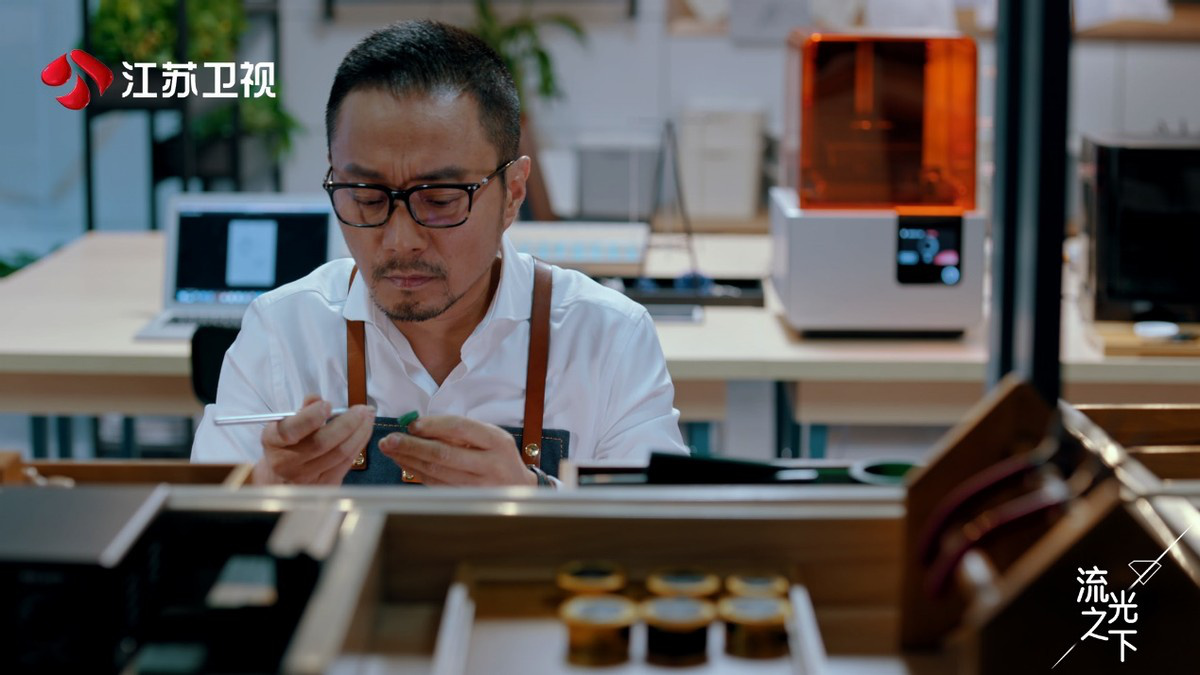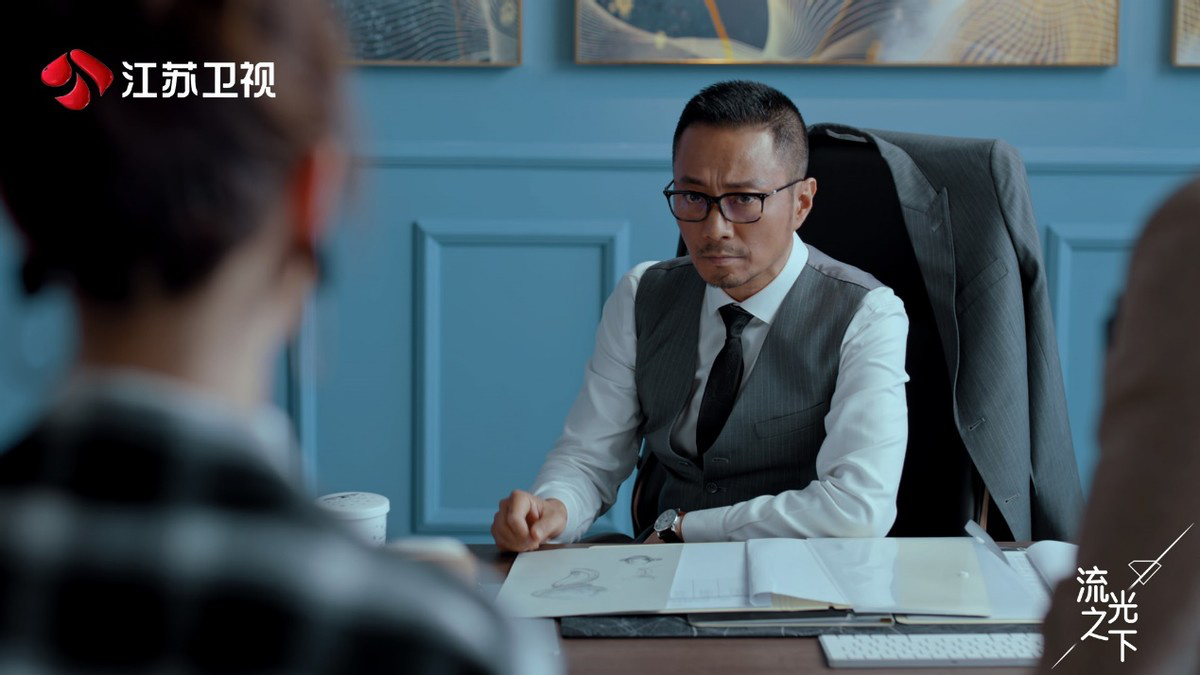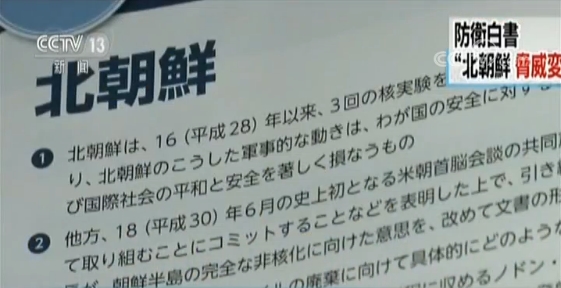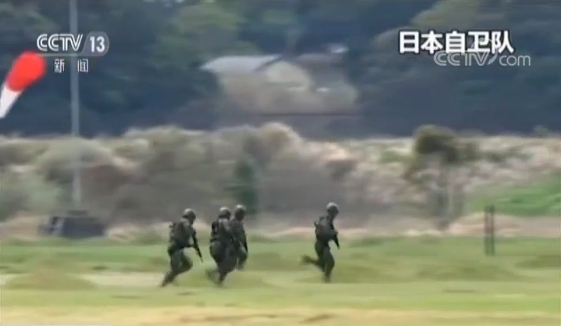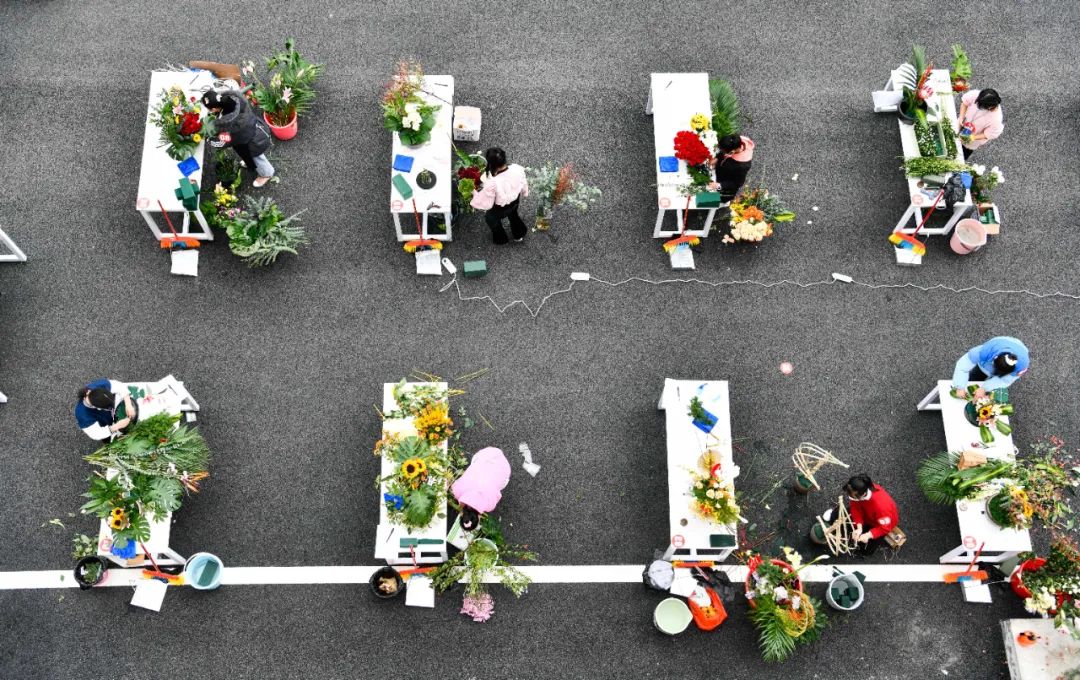order of the president of the people’s republic of china
No.3
The Tourism Law of the People’s Republic of China was adopted by the second session of the 12th the NPC Standing Committee in People’s Republic of China (PRC) on April 25th, 2013, and is hereby promulgated and shall come into force as of October 1st, 2013.
Chairman People’s Republic of China (PRC), Supreme Leader
April 25, 2013
order of the president of the people’s republic of china
No.57
The NPC Standing Committee’s Decision on Amending the Foreign Trade Law of People’s Republic of China (PRC) and Other Twelve Laws was adopted at the 24th meeting of the 12th the NPC Standing Committee in People’s Republic of China (PRC) on November 7, 2016. It is hereby promulgated and shall come into force as of the date of promulgation.
Chairman People’s Republic of China (PRC), Supreme Leader
November 7, 2016
Twelve, the "Tourism Law of the People’s Republic of China" is amended.
(1) Article 39 is amended as: "To engage in tour guide business, one should obtain a tour guide certificate, have corresponding academic qualifications, language ability and tourism experience, and conclude a labor contract with the travel agency that has appointed him to engage in tour guide business and obtained the business license for outbound tourism business."
(two) delete the "tour guide card" in the first paragraph of article forty-first.
(3) Item 2 of Article 96 is amended as: "(2) arranging for persons who have not obtained a tour guide certificate to provide tour guide services or arranging for persons who do not have the conditions to provide tour guide services".
(four) delete the "tour guide card" in Articles 98, 99, 100, 101 and 103.
(five) the "tour guide card" in the first paragraph of Article 102 is amended as "without the conditions for the tour leader". Delete the "tour guide card" in the second and third paragraphs.
Tourism Law of the People’s Republic of China
(Promulgated by Decree No.3 of the President of the People’s Republic of China on April 25, 2013 at the second session of the 12th the NPC Standing Committee, revised according to Decree No.57 of the President of the People’s Republic of China on November 7, 2016 at the 24th session of the 12th the NPC Standing Committee, and implemented as of the date of promulgation).
Chapter I General Principles
Article 1 This Law is formulated to protect the legitimate rights and interests of tourists and tour operators, standardize the order of the tourism market, protect and rationally utilize tourism resources, and promote the sustained and healthy development of tourism.
Article 2 This Law shall apply to tourism activities in the form of sightseeing, vacation and leisure organized abroad in People’s Republic of China (PRC) and in People’s Republic of China (PRC), as well as business activities providing related services for tourism activities.
Article 3 The State develops tourism, improves public tourism services, and protects the rights of tourists in tourism activities according to law.
Article 4 The development of tourism should follow the principle of integrating social benefits, economic benefits and ecological benefits. The state encourages all kinds of market players to make rational use of tourism resources according to law on the premise of effectively protecting tourism resources. The tourist sites built with public resources should reflect the nature of public welfare.
Article 5 The state advocates a healthy, civilized and environmentally friendly tourism mode, supports and encourages various social institutions to carry out tourism public welfare propaganda, and rewards units and individuals that have made outstanding contributions to promoting the development of tourism.
Article 6 The State shall establish and improve standards of tourism services and market rules, and prohibit industry monopoly and regional monopoly. Tourism operators should operate in good faith, compete fairly, assume social responsibilities, and provide tourists with safe, healthy, hygienic and convenient tourism services.
Seventh the State Council to establish and improve the comprehensive coordination mechanism of tourism, comprehensive coordination of tourism development.
The local people’s governments at or above the county level shall strengthen the organization and leadership of tourism work, clarify the relevant departments or institutions, and make overall coordination on the development, supervision and management of tourism in their respective administrative areas.
Eighth tourism industry organizations established according to law, the implementation of self-discipline management.
Chapter II Tourists
Ninth tourists have the right to choose their own tourism products and services, and have the right to refuse the compulsory trading behavior of tourism operators.
Tourists have the right to know the real situation of the tourism products and services they buy.
Tourists have the right to ask tour operators to provide products and services as agreed.
Tenth tourists’ personal dignity, national customs and religious beliefs should be respected.
Eleventh disabled people, the elderly, minors and other tourists enjoy convenience and preferential treatment in tourism activities in accordance with laws, regulations and relevant provisions.
Twelfth tourists have the right to ask for help and protection when their personal and property safety is in danger.
Tourists who have suffered personal or property damage have the right to compensation according to law.
Thirteenth tourists in tourism activities should abide by social public order and social morality, respect local customs, cultural traditions and religious beliefs, cherish tourism resources, protect the ecological environment, and abide by the code of conduct for tourism civilization.
Fourteenth tourists in tourism activities or in the settlement of disputes, shall not harm the legitimate rights and interests of local residents, shall not interfere with other people’s tourism activities, shall not harm the legitimate rights and interests of tour operators and tourism professionals.
Fifteenth tourists, when purchasing and accepting tourism services, should truthfully inform the tourism operators of personal health information related to tourism activities, and abide by the safety warning provisions in tourism activities.
Tourists should cooperate with the measures taken by the state to temporarily restrict tourism activities in response to major emergencies and the safety precautions and emergency measures taken by relevant departments, institutions or tour operators.
Tourists who violate the safety warning regulations or fail to cooperate with the measures taken by the state to temporarily restrict tourism activities in response to major emergencies, safety precautions and emergency response measures shall bear corresponding responsibilities according to law.
Sixteenth outbound tourists are not allowed to stay illegally abroad, and tourists who leave the country with a group are not allowed to join or leave the group without authorization.
Inbound tourists are not allowed to stay illegally in China, and tourists who enter with the group are not allowed to leave the group without authorization.
Chapter III Tourism Planning and Promotion
Seventeenth the State Council and the local people’s governments at or above the county level shall incorporate the development of tourism into the national economic and social development plan.
The State Council and the people’s governments of provinces, autonomous regions and municipalities directly under the Central Government, as well as the people’s governments of cities and counties with rich tourism resources, shall organize the formulation of tourism development plans in accordance with the requirements of national economic and social development plans. When making use of tourism resources that cross administrative regions and are suitable for overall utilization, the people’s government at a higher level shall organize the preparation or the relevant local people’s governments shall negotiate to prepare a unified tourism development plan.
Article 18 The tourism development plan shall include the overall requirements and development objectives of tourism development, the requirements and measures for the protection and utilization of tourism resources, and the requirements and promotion measures for the development of tourism products, the improvement of tourism service quality, the construction of tourism culture, the promotion of tourism image, and the construction of tourism infrastructure and public service facilities.
According to the tourism development plan, local people’s governments at or above the county level can make special plans for the development and utilization of key tourism resources, and put forward special requirements for tourism projects, facilities and service functions in specific areas.
Nineteenth tourism development planning should be linked with the overall land use planning, urban and rural planning, environmental protection planning and other natural resources and cultural relics and other human resources protection and utilization planning.
Twentieth people’s governments at all levels shall fully consider the spatial layout of relevant tourism projects and facilities and the requirements for construction land when compiling the overall land use planning and urban and rural planning. Planning and construction of transportation, communication, water supply, power supply, environmental protection and other infrastructure and public service facilities should take into account the needs of tourism development.
Article 21 The tourism utilization of natural resources, cultural relics and other cultural resources must strictly abide by the provisions of relevant laws and regulations, meet the requirements of resources, ecological protection and cultural relics safety, respect and maintain local traditional culture and customs, safeguard the regional integrity, cultural representation and regional particularity of resources, and consider the needs of military facilities protection. The relevant competent departments should strengthen the supervision and inspection of resource protection and tourism utilization.
Twenty-second people’s governments at all levels shall organize the evaluation of the implementation of the tourism development plan compiled by the government at the corresponding level and announce it to the public.
Article 23 the State Council and local people’s governments at or above the county level shall formulate and organize the implementation of industrial policies conducive to the sustained and healthy development of tourism, promote the construction of tourism and leisure system, take measures to promote regional tourism cooperation, encourage the development of cross-regional tourism routes and products, promote the integration of tourism with industry, agriculture, commerce, culture, health, sports, science and education, and support the development of tourism in ethnic minority areas, old revolutionary areas, remote areas and poverty-stricken areas.
Twenty-fourth the State Council and the local people’s governments at or above the county level shall, according to the actual situation, arrange funds to strengthen the construction of tourism infrastructure, tourism public services and tourism image promotion.
Article 25 The State shall formulate and implement the strategy of promoting tourism image. The tourism authorities in the State Council shall co-ordinate the overseas promotion of the national tourism image, establish tourism image promotion institutions and networks, and carry out international cooperation and exchanges in tourism.
The local people’s governments at or above the county level shall co-ordinate and organize the promotion of local tourism image.
Twenty-sixth the State Council tourism authorities and local people’s governments at or above the county level shall, according to the needs, establish a tourism public information and consulting platform, and provide tourists with necessary information and consulting services such as tourist attractions, routes, transportation, meteorology, accommodation, safety, medical emergency and so on free of charge. The relevant departments of the people’s governments of cities and counties with districts shall set up tourist consultation centers in transportation hubs, commercial centers and places where tourists are concentrated according to needs, and set up tourist indication signs in scenic spots and roads leading to major scenic spots.
The people’s governments of cities and counties with districts rich in tourism resources may, according to local actual conditions, establish tourist passenger dedicated lines or tourist transit stations to provide services for tourists traveling in and around the city.
Article 27 The State encourages and supports the development of tourism vocational education and training to improve the quality of tourism professionals.
Chapter IV Tourism Management
Article 28 To set up a travel agency, attract, organize and receive tourists and provide them with tourism services, it shall meet the following conditions, obtain the permission of the tourism authorities and go through industrial and commercial registration according to law:
(1) Having a fixed business place;
(2) Having necessary business facilities;
(3) It has registered capital that meets the requirements;
(4) Having necessary management personnel and tour guides;
(5) Other conditions stipulated by laws and administrative regulations.
Twenty-ninth travel agencies can operate the following businesses:
(1) Domestic tourism;
(2) outbound tourism;
(3) Border tourism;
(4) inbound tourism;
(5) Other tourism businesses.
Travel agencies engaged in the second and third items of the preceding paragraph shall obtain corresponding business licenses, and the specific conditions shall be stipulated by the State Council.
Thirtieth travel agencies shall not lease or lend the business license of travel agencies, or illegally transfer the business license of travel agencies in other forms.
Thirty-first travel agencies shall pay a deposit for the quality of tourism services in accordance with the regulations, which shall be used for compensation for the damage of tourists’ rights and interests and advance the expenses of emergency assistance when the personal safety of tourists is in danger.
Thirty-second travel agencies to attract and organize tourists to release information must be true and accurate, and shall not make false propaganda to mislead tourists.
Thirty-third travel agencies and their employees shall organize and receive tourists, and shall not arrange visits or participate in projects or activities that violate Chinese laws, regulations and social ethics.
Article 34 Travel agencies shall order products and services from qualified suppliers when organizing tourism activities.
Thirty-fifth travel agencies shall not organize tourism activities at unreasonably low prices to deceive tourists, and obtain illegitimate interests such as kickbacks by arranging shopping or paying for other tourism projects.
When organizing and receiving tourists, travel agencies shall not designate specific shopping places, and shall not arrange other paid tourism projects. However, unless it is agreed by both parties through consultation or requested by tourists and does not affect the itinerary of other tourists.
In case of violation of the provisions of the preceding two paragraphs, the tourist has the right to request the travel agency to handle the return of the goods and advance the payment for the return of the goods, or refund the expenses of the paid travel items within 30 days after the end of the travel itinerary.
Thirty-sixth travel agencies organize outbound tours or organize and receive inbound tours, and should arrange tour leaders or tour guides to accompany them throughout the journey in accordance with regulations.
Thirty-seventh people who have passed the tour guide qualification examination, signed a labor contract with a travel agency or registered in the relevant tourism industry organizations may apply for a tour guide certificate.
Article 38 A travel agency shall conclude a labor contract with its hired tour guides according to law, pay labor remuneration and pay social insurance fees.
Where a travel agency temporarily hires a tour guide to provide services for tourists, it shall pay the tour guide the tour guide service fee stipulated in the third paragraph of Article 60 of this Law in full.
Where a travel agency arranges a tour guide to provide services for a group tour, it shall not require the tour guide to pay in advance or charge any fees to the tour guide.
Article 39 Anyone who engages in tour guide business shall obtain a tour guide certificate, have corresponding academic qualifications, language ability and tourism experience, and conclude a labor contract with the travel agency that has appointed him to engage in tour guide business and obtained the business license for outbound tourism business.
Fortieth tour guides and tour leaders must accept the appointment of travel agencies to provide services for tourists, and may not contract tour guides and tour leaders without permission.
Article 41 Tour guides and tour leaders engaged in business activities shall wear tour guide cards, abide by professional ethics, respect tourists’ customs and religious beliefs, inform and explain the norms of civilized tourism behavior to tourists, guide tourists to travel healthily and civilized, and discourage tourists from violating social ethics.
Tour guides and tour leaders shall strictly implement the travel itinerary, and shall not change the travel itinerary or suspend service activities without authorization, and shall not ask for tips from tourists, and shall not induce, deceive, force or force tourists to shop or participate in paid travel projects in disguise.
Forty-second scenic spots should meet the following conditions, and listen to the opinions of the tourism authorities:
(1) Necessary tourism supporting services and auxiliary facilities;
(2) Having necessary safety facilities and systems, and meeting the safety conditions after safety risk assessment;
(3) Necessary environmental protection facilities and ecological protection measures;
(4) Other conditions stipulated by laws and administrative regulations.
Forty-third use of public resources to build scenic spots tickets and scenic spots, transportation and other items to be charged separately, the implementation of government pricing or government guidance, and strictly control the price increase. If fees are to be charged or prices are to be raised, a hearing shall be held to solicit the opinions of tourists, business operators and relevant parties and demonstrate its necessity and feasibility.
Scenic spots built with public resources shall not increase their prices in disguised form by increasing the fees charged separately; If the investment cost of the project charged separately has been recovered, the price shall be reduced or the fee shall be cancelled accordingly.
Public welfare city parks, museums, memorial halls, etc., except for key cultural relics protection units and precious cultural relics collection units, should be gradually opened free of charge.
Forty-fourth scenic spots should publicize the ticket price, the price of separate fees and the price of group fees in a conspicuous position. The increase in ticket prices in scenic spots should be announced six months in advance.
If tickets for different scenic spots or different places in the same scenic spot are sold together, the combined price shall not be higher than the sum of the prices of individual tickets, and tourists have the right to choose to buy individual tickets.
If the core tour projects in the scenic area are suspended from opening to tourists or stop providing services for some reason, they shall be publicized and the fees shall be reduced accordingly.
Forty-fifth scenic spots to receive tourists shall not exceed the maximum carrying capacity approved by the competent department of scenic spots. The scenic spot shall announce the maximum carrying capacity approved by the competent department of the scenic spot, formulate and implement the tourist flow control scheme, and control the number of tourists received by the scenic spot by means of ticket reservation.
When the number of tourists may reach the maximum carrying capacity, the scenic spot shall make an announcement in advance and report to the local people’s government at the same time, and the scenic spot and the local people’s government shall take timely measures such as diversion and diversion.
Forty-sixth urban and rural residents use their own houses or other conditions to engage in tourism business according to law, and their management measures shall be formulated by provinces, autonomous regions and municipalities directly under the central government.
Forty-seventh high-risk tourism projects such as high altitude, high speed, water, diving, exploration, etc., shall obtain business licenses in accordance with relevant state regulations.
Forty-eighth travel agency business through the network, it shall obtain the travel agency business license in accordance with the law, and indicate its business license information in a prominent position on the homepage of its website.
Websites that publish tourism business information shall ensure that their information is true and accurate.
Forty-ninth operators who provide services such as transportation, accommodation, catering and entertainment for tourists shall meet the requirements stipulated by laws and regulations and perform their obligations in accordance with the contract.
Fiftieth tour operators should ensure that the goods and services they provide meet the requirements of protecting personal and property safety.
Tourism operators have obtained relevant quality standards, and their facilities and services shall not be lower than the corresponding standards; Without obtaining the quality standard grade, the title and logo of the relevant quality grade shall not be used.
Fifty-first tour operators shall not give or accept bribes when selling or buying goods or services.
Fifty-second tour operators should keep confidential the personal information of tourists they know in their business activities.
Article 53 Operators engaged in road tourist passenger transport shall abide by the various systems of road passenger transport safety management, clearly indicate the special signs for road tourist passenger transport in a prominent position of vehicles, publicize the information of operators and drivers in a prominent position in the carriages, and supervise telephone calls by road transport management institutions.
Fifty-fourth scenic spots, accommodation operators will be part of their business projects or venues to others to engage in accommodation, catering, shopping, sightseeing, entertainment, tourism and transportation, etc., should be jointly and severally liable for the damage caused to tourists by the actual operators’ business behavior.
Article 55 When organizing and receiving inbound and outbound tours, tour operators find that tourists engage in illegal activities or violate the provisions of Article 16 of this Law, they shall promptly report to the public security organs, tourism authorities or Chinese institutions abroad.
Article 56 The state shall, according to the risk degree of tourism activities, implement a liability insurance system for operators such as travel agencies, accommodation, tourism transportation and high-risk tourism projects as stipulated in Article 47 of this Law.
Chapter V Tourism Service Contracts
Article 57 A travel agency shall conclude a contract with tourists when organizing and arranging tourism activities.
Article 58 A package tour contract shall be in written form and include the following contents:
(1) Basic information of travel agencies and tourists;
(2) Travel itinerary;
(three) the minimum number of tour groups;
(4) Arrangements and standards for tourism services such as transportation, accommodation and catering;
(five) the specific content and time of sightseeing, entertainment and other projects;
(six) free time schedule;
(seven) travel expenses and the time limit and method of payment;
(eight) the liability for breach of contract and the way to resolve disputes;
(nine) other matters stipulated by laws and regulations and agreed by both parties.
When concluding a package tour contract, the travel agency shall explain in detail the contents contained in items 2 to 8 of the preceding paragraph to the tourists.
Fifty-ninth travel agencies should provide tourists with a tour of travel itinerary before the start of the tour. The travel itinerary is an integral part of the package tour contract.
Article 60 Where a travel agency entrusts other travel agencies to sell package tour products and conclude a package tour contract with tourists, it shall specify the basic information of the entrusting agency and the agency in the package tour contract.
Where a travel agency entrusts the reception business in a package tour contract to a local agency in accordance with the provisions of this Law, it shall specify the basic information of the local agency in the package tour contract.
Where a tour guide is arranged to provide services for tourists, the tour guide service fee shall be specified in the package tour contract.
Sixty-first travel agencies should remind tourists who take part in group tours to take out insurance in personal accident insurance according to regulations.
Article 62 When concluding a package tour contract, the travel agency shall inform the tourists of the following matters:
(a) the situation that tourists are not suitable to participate in tourism activities;
(2) Safety precautions in tourism activities;
(3) Information that the travel agency can reduce or exempt its responsibilities according to law;
(four) tourists should pay attention to the relevant laws, regulations, customs and habits, religious taboos, and activities that are not suitable for participation according to the laws of China;
(five) other matters that should be informed as prescribed by laws and regulations.
In the performance of the package tour contract, the travel agency shall also inform the tourists of the matters specified in the preceding paragraph.
Sixty-third travel agencies to attract tourists to travel in groups, because they cannot leave the group because they do not reach the agreed number, the group agency may terminate the contract. However, tourists should be notified at least seven days in advance for domestic tourism and at least 30 days in advance for outbound tourism.
If it is impossible to leave the tour group because the agreed number of people is not reached, the tour group agency may entrust other travel agencies to perform the contract with the written consent of the tourists. The package tour agency is responsible for tourists, and the entrusted travel agency is responsible for the package tour agency. If the tourist disagrees, the contract may be terminated.
If the contract is terminated due to the failure to reach the agreed number of tour groups, the tour group agency shall refund all the fees collected to the tourists.
Article 64 Before the start of the tour, tourists can transfer their rights and obligations in the package tour contract to a third party, and the travel agency may not refuse it without justifiable reasons, so the increased expenses shall be borne by the tourists and the third party.
Article 65 If the tourist terminates the contract before the end of the tour, the package tour agency shall return the balance to the tourist after deducting the necessary expenses.
Article 66 A tourist may terminate the contract in any of the following circumstances:
(a) suffering from infectious diseases and other diseases that may endanger the health and safety of other tourists;
(2) Carrying articles endangering public safety and refusing to hand them over to the relevant departments for handling;
(3) engaging in activities that are illegal or violate social morality;
(four) engaged in activities that seriously affect the rights and interests of other tourists, and do not listen to dissuasion, can not stop;
(5) Other circumstances stipulated by law.
If the contract is terminated due to the circumstances specified in the preceding paragraph, the package tour agency shall, after deducting the necessary expenses, return the balance to the tourists; If losses are caused to travel agencies, tourists shall be liable for compensation according to law.
Article 67 If the travel itinerary is affected due to force majeure or events that cannot be avoided after the travel agency or the assistant has exercised reasonable care, it shall be handled according to the following circumstances:
(a) the contract can not be continued, travel agencies and tourists can terminate the contract. If the contract cannot be fully performed, the travel agency may change the contract within a reasonable range after explaining it to the tourists; If the tourists do not agree to the change, they may terminate the contract.
(2) If the contract is terminated, the package tour agency shall return the balance to the tourists after deducting the non-refundable fees paid to the ground agency or the performance assistant; If the contract is changed, the increased expenses shall be borne by the tourists, and the reduced expenses shall be returned to the tourists.
(3) Where the personal and property safety of tourists is endangered, the travel agency shall take corresponding safety measures, so the expenses incurred shall be shared by the travel agency and tourists.
(4) If tourists are stranded, the travel agency shall take corresponding resettlement measures. Therefore, the increased accommodation expenses shall be borne by the tourists; The increased return cost shall be shared by the travel agency and tourists.
Article 68 If the contract is terminated during the tour, the travel agency shall assist the tourist to return to the place of departure or a reasonable place designated by the tourist. If the contract is terminated due to the reasons of the travel agency or the performance assistant, the return expenses shall be borne by the travel agency.
Article 69 A travel agency shall perform its obligations in accordance with the package tour contract, and shall not change the travel itinerary without authorization.
With the consent of the tourists, if the travel agency entrusts the reception business in the package tour contract to other agencies with corresponding qualifications, it shall conclude a written entrustment contract with the agency, stipulate the rights and obligations of both parties, provide the agency with a copy of the package tour contract concluded with the tourists, and pay the agency no less than the cost of reception and service. The land agency shall provide services in accordance with the package tour contract and the entrustment contract.
Article 70 If a travel agency fails to perform its obligations under the package tour contract or fails to meet the contract obligations, it shall bear the liabilities for breach of contract such as continuing to perform, taking remedial measures or compensating for losses according to law; Those who cause personal injury or property loss to tourists shall be liable for compensation according to law. If the travel agency has the conditions to perform and refuses to perform the contract after being requested by the tourists, resulting in serious consequences such as personal injury and detention of the tourists, the tourists may also ask the travel agency to pay compensation of more than one time and less than three times the travel expenses.
If the package tour contract cannot be fulfilled or cannot be fulfilled according to the agreement due to the tourists’ own reasons, or if personal injury or property loss is caused to the tourists, the travel agency shall not be liable.
During the period when tourists arrange their own activities, if the travel agency fails to fulfill the obligation of safety tips and assistance, it shall bear corresponding responsibilities for personal injury and property loss of tourists.
Seventy-first due to the ground agency, the performance of the auxiliary cause of breach of contract, by the travel agency to bear the responsibility; After undertaking the responsibility, the package tour agency can claim compensation from the land agency and the performance assistant.
If personal injury or property loss is caused to tourists due to the reasons of the land agency and the performance assistant, tourists may ask the land agency and the performance assistant to bear the liability for compensation, or they may ask the travel agency to bear the liability for compensation; After undertaking the responsibility, the package tour agency can claim compensation from the land agency and the performance assistant. However, if the tourists suffer personal injury or property loss due to the reasons of the public transport operators, the public transport operators shall be liable for compensation according to law, and the travel agency shall assist the tourists to claim compensation from the public transport operators.
Seventy-second tourists in tourism activities or in the settlement of disputes, damage the legitimate rights and interests of travel agencies, performance assistants, tourism professionals or other tourists, shall be liable for compensation according to law.
Article 73 If a travel agency arranges travel itinerary according to the specific requirements of tourists and concludes a package tour contract with tourists, the tourists request to change the travel itinerary, so the increased expenses shall be borne by the tourists, and the reduced expenses shall be returned to the tourists.
Article 74 If a travel agency accepts the entrustment of tourists to book travel services such as transportation, accommodation, catering, sightseeing and entertainment for them and collects agency fees, it shall handle the entrusted affairs in person. If the travel agency’s fault causes losses to tourists, the travel agency shall be liable for compensation.
When a travel agency accepts the entrustment of tourists and provides them with travel itinerary design, travel information consultation and other services, it shall ensure that the design is reasonable and feasible, and the information is timely and accurate.
Seventy-fifth accommodation operators shall provide accommodation services for group tourists in accordance with the provisions of the tourism service contract. If the accommodation operator fails to provide services in accordance with the tourism service contract, it shall provide accommodation services not lower than the original standard for tourists, so the increased expenses shall be borne by the accommodation operator; However, if the service cannot be provided due to force majeure or measures taken by the government due to public interests, the accommodation operator shall assist in arranging accommodation for tourists.
Chapter VI Tourism Safety
Seventy-sixth people’s governments at or above the county level shall be responsible for tourism safety. The relevant departments of the people’s governments at or above the county level shall perform the duties of tourism safety supervision in accordance with laws and regulations.
Article 77 The State establishes a safety risk warning system for tourist destinations. The classification and implementation procedures of safety risk warning of tourist destinations shall be formulated by the competent tourism department of the State Council in conjunction with relevant departments.
The people’s governments at or above the county level and their relevant departments shall take tourism safety as an important part of emergency monitoring and evaluation.
Seventy-eighth people’s governments at or above the county level shall incorporate tourism emergency management into the government emergency management system according to law, formulate emergency plans, and establish a response mechanism for tourism emergencies.
After an emergency occurs, the local people’s government and its relevant departments and institutions shall take measures to carry out rescue, and assist tourists to return to their places of origin or reasonable places designated by tourists.
Seventy-ninth tour operators should strictly implement the laws, regulations, national standards and industry standards on safety production management and fire safety management, have corresponding safety production conditions, and formulate tourist safety protection systems and emergency plans.
Tourism operators should carry out regular emergency rescue skills training for employees who directly provide services to tourists, conduct safety inspection, monitoring and evaluation on the products and services provided, and take necessary measures to prevent the occurrence of hazards.
Tourism operators should take corresponding security measures when organizing and receiving tourists such as the elderly, minors and the disabled.
Article 80 A tour operator shall explain or warn tourists in advance in an express way about the following matters in tourism activities:
(a) the correct use of related facilities and equipment;
(2) Necessary safety precautions and emergency measures;
(3) Business and service sites, facilities and equipment that are not open to tourists;
(four) groups that are not suitable to participate in related activities;
(five) other circumstances that may endanger the personal and property safety of tourists.
Article 81 After an emergency or tourism safety accident occurs, tourism operators shall immediately take necessary rescue and disposal measures, fulfill their reporting obligations according to law, and make proper arrangements for tourists.
Eighty-second tourists have the right to request the tour operators, local governments and relevant institutions to provide timely assistance when their personal and property safety is in danger.
When China outbound tourists are in trouble abroad, they have the right to request our local institutions to provide assistance and protection within the scope of their duties.
After receiving assistance from relevant organizations or institutions, tourists should pay the expenses that should be borne by individuals.
Chapter VII Tourism Supervision and Administration
Article 83 The tourism authorities and relevant departments of the people’s governments at or above the county level shall, in accordance with the provisions of this Law and relevant laws and regulations, supervise and manage the tourism market within their respective functions and duties.
The people’s governments at or above the county level shall organize the competent tourism departments, relevant competent departments and law enforcement departments of industry and commerce administration, product quality supervision and transportation to supervise and inspect the relevant tourism business activities.
Eighty-fourth tourism authorities shall perform their duties of supervision and management, and shall not charge fees to the objects of supervision and management in violation of the provisions of laws and administrative regulations.
Tourism authorities and their staff shall not participate in any form of tourism business activities.
Article 85 The tourism authorities of the people’s governments at or above the county level shall have the right to supervise and inspect the following matters:
(a) whether the travel agency business and the tour guide and tour guide service have obtained the business and practice license;
(two) the business behavior of the travel agency;
(three) the service behavior of tourism professionals, such as tour guides and tour leaders;
(four) other matters stipulated by laws and regulations.
The competent tourism authorities shall carry out supervision and inspection in accordance with the provisions of the preceding paragraph, and may consult and copy contracts, bills, account books and other materials suspected of violating the law.
Eighty-sixth tourism authorities and relevant departments to carry out supervision and inspection according to law, the supervision and inspection personnel shall not be less than two, and shall produce legal documents. If there are less than two supervisors and inspectors or fail to produce legal certificates, the inspected units and individuals have the right to refuse.
The supervision and inspection personnel shall keep confidential the business secrets and personal information of the inspected units they know in the supervision and inspection according to law.
Eighty-seventh of the supervision and inspection carried out according to law, the relevant units and individuals shall cooperate, truthfully explain the situation and provide documents and materials, and shall not refuse, hinder or conceal.
Article 88 If the tourism authorities and relevant departments of the people’s governments at or above the county level find violations of the provisions of this Law while performing their duties of supervision and inspection or when handling reports and complaints, they shall deal with them promptly according to law; Matters that do not belong to the scope of responsibilities of this department shall be notified in writing in time and handed over to the relevant departments for investigation.
Article 89 The local people’s governments at or above the county level shall establish a sharing mechanism of information on the investigation and punishment of illegal tourism activities, and shall supervise the illegal activities that need to be investigated and punished jointly by different departments and regions.
Tourism authorities and relevant departments shall, in accordance with their respective responsibilities, timely announce the situation of supervision and inspection to the public.
Article 90 Tourism industry organizations established according to law shall, in accordance with the provisions of laws, administrative regulations and articles of association, formulate industry business norms and service standards, conduct self-discipline management on the business behaviors and service quality of their members, organize professional ethics education and business training, and improve the quality of employees.
Chapter VIII Settlement of Tourism Disputes
Article 91 The people’s governments at or above the county level shall designate or establish a unified tourist complaint handling institution. When receiving a complaint, the accepting institution shall promptly handle it or hand it over to the relevant department for handling, and inform the complainant.
Article 92 Disputes between tourists and tour operators can be resolved through the following channels:
(1) Both parties negotiate;
(two) to apply for mediation to consumers’ associations, tourism complaint acceptance agencies or relevant mediation organizations;
(three) according to the arbitration agreement reached with the tour operators, submit it to an arbitration institution for arbitration;
(4) Bring a lawsuit to the people’s court.
Article 93 Consumers’ associations, tourist complaint handling institutions and relevant mediation organizations shall mediate disputes between tourists and tour operators according to law on the basis of mutual willingness.
Article 94 If there is a dispute between tourists and tour operators, and there are a large number of tourists and they have common requests, they may elect representatives to participate in consultation, mediation, arbitration and litigation.
Chapter IX Legal Liability
Article 95 Whoever, in violation of the provisions of this Law, engages in travel agency business without permission shall be ordered by the competent tourism department or the administrative department for industry and commerce to make corrections, his illegal income shall be confiscated and he shall be fined not less than 10,000 yuan but not more than 100,000 yuan; Illegal income of more than one hundred thousand yuan, and impose a fine of more than one time and less than five times the illegal income; The relevant responsible personnel shall be fined between two thousand yuan and twenty thousand yuan.
If a travel agency violates the provisions of this Law, operates the business in Item 2 and Item 3 of Paragraph 1 of Article 29 of this Law without permission, or rents or lends the business license of a travel agency, or illegally transfers the business license of a travel agency by other means, it shall be punished in accordance with the provisions of the preceding paragraph and ordered to suspend business for rectification; If the circumstances are serious, the business license of the travel agency shall be revoked; The person in charge who is directly responsible shall be fined from 2,000 yuan to 20,000 yuan.
Article 96 If a travel agency violates the provisions of this Law and commits any of the following acts, it shall be ordered by the tourism authorities to make corrections, its illegal income shall be confiscated, and it shall be fined between 5,000 yuan and 50,000 yuan. If the circumstances are serious, it shall be ordered to suspend business for rectification or revoke the business license of the travel agency; The directly responsible person in charge and other directly responsible personnel shall be fined from 2,000 yuan to 20,000 yuan:
(1) Failing to arrange a tour leader or tour guide to accompany the outbound or inbound team tour in accordance with the regulations;
(2) arranging personnel who have not obtained a tour guide certificate to provide tour guide services or arranging personnel who do not have the conditions to provide tour guide services;
(three) did not pay the tour guide service fee to the temporary tour guide;
(four) asking the tour guide to pay in advance or collect fees from the tour guide.
Article 97 If a travel agency violates the provisions of this Law and commits any of the following acts, it shall be ordered by the tourism authorities or relevant departments to make corrections, its illegal income shall be confiscated, and it shall be fined between 5,000 yuan and 50,000 yuan. If the illegal income is more than 50,000 yuan, a fine of more than one time and less than five times the illegal income shall be imposed; If the circumstances are serious, it shall be ordered to suspend business for rectification or revoke the business license of the travel agency; The directly responsible person in charge and other directly responsible personnel shall be fined from 2,000 yuan to 20,000 yuan:
(a) false propaganda, misleading tourists;
(2) ordering products and services from unqualified suppliers;
(3) Failing to take out liability insurance for travel agencies as required.
Article 98 If a travel agency violates the provisions of Article 35 of this Law, it shall be ordered by the tourism authorities to make corrections, confiscate its illegal income, order it to suspend business for rectification, and impose a fine of not less than 30,000 yuan but not more than 300,000 yuan; Illegal income of more than three hundred thousand yuan, and impose a fine of more than one time and less than five times the illegal income; If the circumstances are serious, the business license of the travel agency shall be revoked; The directly responsible person in charge and other directly responsible personnel shall have their illegal income confiscated, and be fined between 2,000 yuan and 20,000 yuan, and their tour guide cards shall be suspended or revoked.
Article 99 If a travel agency fails to fulfill its reporting obligations as stipulated in Article 55 of this Law, it shall be fined between 5,000 yuan and 50,000 yuan by the tourism authorities. If the circumstances are serious, it shall be ordered to suspend business for rectification or revoke the business license of the travel agency; The directly responsible person in charge and other directly responsible personnel shall be fined from 2,000 yuan to 20,000 yuan, and the tour guide card shall be temporarily suspended or revoked.
Article 100 If a travel agency violates the provisions of this Law and commits any of the following acts, the competent tourism department shall order it to make corrections, impose a fine of not less than 30,000 yuan but not more than 300,000 yuan, and order it to suspend business for rectification; If serious consequences such as tourists’ detention are caused, the business license of travel agency shall be revoked; The directly responsible person in charge and other directly responsible personnel shall be fined between 2,000 yuan and 20,000 yuan, and the tour guide card shall be suspended or revoked:
(a) changing the travel itinerary without authorization during the travel itinerary, which seriously damages the rights and interests of tourists;
(2) Refusing to perform the contract;
(three) without the written consent of the tourists, entrust other travel agencies to perform the package tour contract.
Article 101 Where a travel agency, in violation of the provisions of this Law, arranges tourists to visit or participate in projects or activities that violate China’s laws, regulations and social ethics, the tourism authorities shall order it to make corrections, confiscate its illegal income, order it to suspend business for rectification, and impose a fine of not less than 20,000 yuan but not more than 200,000 yuan; If the circumstances are serious, the business license of the travel agency shall be revoked; The directly responsible person in charge and other directly responsible personnel shall be fined from 2,000 yuan to 20,000 yuan, and the tour guide card shall be temporarily suspended or revoked.
Article 102 Anyone who, in violation of the provisions of this Law, engages in tour guide or tour leader activities without obtaining a tour guide license or without the qualifications for tour leader, shall be ordered by the tourism authorities to make corrections, his illegal income shall be confiscated, and he shall be fined between 1,000 yuan and 10,000 yuan, and shall be announced.
Tour guides and tour leaders who, in violation of the provisions of this Law, undertake business privately shall be ordered by the tourism authorities to make corrections, their illegal income shall be confiscated, and they shall be fined from 1,000 yuan to 10,000 yuan, and their tour guide cards shall be temporarily suspended or revoked.
Tour guides and tour leaders who, in violation of the provisions of this Law, ask tourists for tips shall be ordered by the tourism authorities to return them and be fined from 1,000 yuan to 10,000 yuan; If the circumstances are serious, the tour guide card shall be temporarily suspended or revoked.
Article 103 A tour guide or tour leader whose tour guide card has been revoked in violation of the provisions of this Law, and the relevant management personnel of a travel agency who have been punished for revoking the business license of a travel agency, shall not reapply for a tour guide card or engage in travel agency business if three years have not passed since the date of punishment.
104th tour operators who give or accept bribes in violation of this law shall be punished by the administrative department for industry and commerce in accordance with the provisions of relevant laws and regulations; If the circumstances are serious, the travel agency business license shall be revoked by the tourism authorities.
Article 105 If a scenic spot does not meet the opening conditions stipulated in this Law and receives tourists, the competent department of the scenic spot shall order it to suspend business for rectification until it meets the opening conditions and impose a fine of not less than 20,000 yuan but not more than 200,000 yuan.
If a scenic spot fails to announce or report to the local people’s government in accordance with the provisions of this Law when the number of tourists may reach the maximum carrying capacity, or fails to take timely measures such as diversion and diversion, or receives tourists over the maximum carrying capacity, the competent department of the scenic spot shall order it to make corrections, and if the circumstances are serious, it shall be ordered to suspend business for rectification for one to six months.
Article 106 If a scenic spot, in violation of the provisions of this Law, increases the price of tickets or items charged separately without authorization, or commits other price violations, it shall be punished by the relevant competent department in accordance with the provisions of relevant laws and regulations.
107th tour operators who violate the laws, regulations, national standards and industry standards related to safety production management and fire safety management shall be punished by the relevant competent departments in accordance with the provisions of relevant laws and regulations.
Article 108 Tourism operators and their employees who violate the provisions of this Law shall be recorded in the credit files by the tourism authorities and relevant departments and announced to the public.
Article 109 Staff members of tourism authorities and relevant departments who abuse their powers, neglect their duties or engage in malpractices for selfish ends in the performance of their duties of supervision and management, which do not constitute a crime, shall be punished according to law.
Article 110 Whoever violates the provisions of this Law and constitutes a crime shall be investigated for criminal responsibility according to law.
Chapter X Supplementary Provisions
Article 111 The meanings of the following terms in this Law:
(1) Tour operators refer to travel agencies, scenic spots and operators who provide services such as transportation, accommodation, catering, shopping and entertainment for tourists.
(2) Scenic spots refer to places or areas that provide sightseeing services for tourists and have clear management boundaries.
(3) A package tour contract refers to a contract in which the travel agency arranges the itinerary in advance, provides or provides two or more tour services such as transportation, accommodation, catering, sightseeing, tour guide or tour leader through the performance of assistants, and the tourists pay the travel expenses at the total price.
(4) The term "package tour agency" refers to a travel agency that has concluded a package tour contract with tourists.
(5) Land agency refers to a travel agency that accepts the entrustment of a package tour agency to receive tourists at the destination.
(6) Fulfillment assistant refers to a legal person or natural person who has a contractual relationship with a travel agency, assists it in fulfilling its obligations under the package tour contract and actually provides relevant services.
Article 112 This Law shall come into force as of October 1, 2013.


